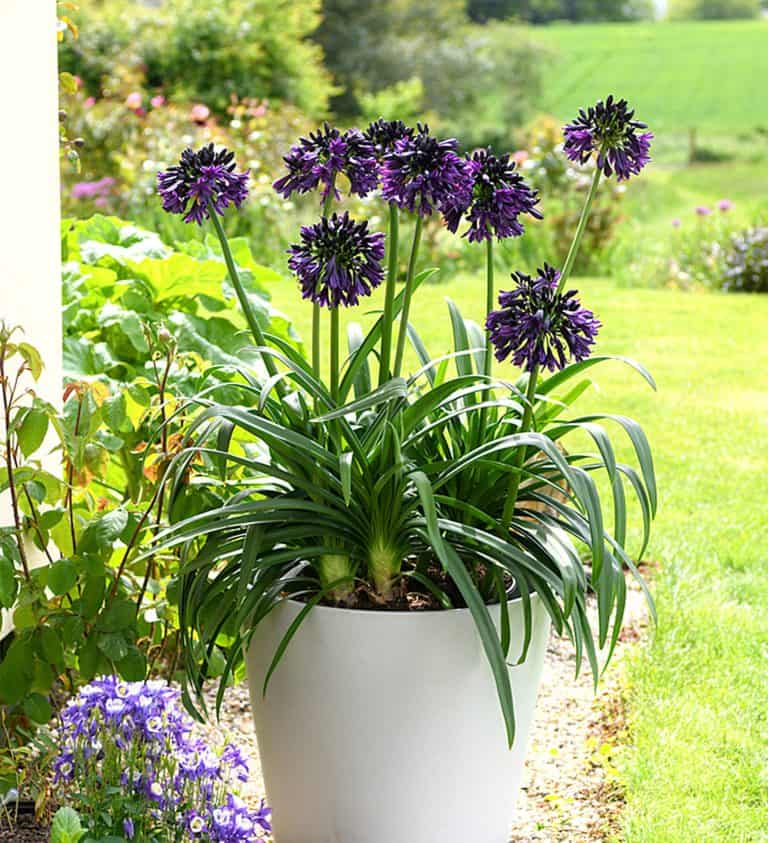Grasping the Art of Agapanthus Treatment: Necessary Steps for Healthy Development and Dynamic Blooms
In the world of cultivation, the growing of agapanthus stands as a fulfilling endeavor for those who seek to support these sophisticated blooming plants. With their striking blossoms and stylish vegetation, agapanthus has captured the attention of gardeners worldwide. However, attaining optimum growth and lively blooms requires a nuanced strategy that encompasses numerous crucial steps. From choosing the appropriate range to grasping pruning methods, the trip towards cultivating growing agapanthus plants is diverse and holds the key to unlocking the complete capacity of these botanical treasures.

Selecting the Right Agapanthus Variety

When selecting the best Agapanthus variety for your yard, take into consideration variables such as climate suitability, blossom color, and growth habit. In addition, take into consideration the climate in your area to make certain the Agapanthus selection you pick can prosper in your certain problems. Comprehending the development routine of various Agapanthus varieties is vital for correct positioning within your garden.
Ideal Planting Conditions
Considering the ideal environmental demands is important for successful Agapanthus farming. Agapanthus thrives in well-draining soil with a somewhat acidic to neutral pH degree. When growing, choose a place that receives full sunlight to partial color. In hotter environments, supplying some afternoon color can prevent scorching of the leaves. Agapanthus plants are delicate to cool temperature levels and should be safeguarded from frost throughout cold weather.
To make sure healthy development and lively blossoms, plant Agapanthus bulbs at a deepness of about 2-4 inches and area them 8-12 inches apart. Mulching around the base of the plants aids maintain wetness and reduces weed growth.
Watering and Feeding Tips
Preserving proper wetness degrees and providing important nutrients are crucial elements in the treatment regimen for Agapanthus plants. It is vital to strike a balance when it comes to watering Agapanthus. If overwatered, these plants choose consistently moist dirt yet are vulnerable to root rot. Throughout the expanding season, water deeply as soon as a week, guaranteeing the dirt is well-draining to prevent waterlogging. In hotter climates or throughout periods of dry spell, even more frequent watering might be necessary to maintain the soil evenly moist. However, decrease watering in the winter season to stop water logged conditions.
Fertilizing Agapanthus is necessary for advertising healthy development and respected blossoms. Use a balanced plant food, such as a 10-10-10 formula, in the very early spring as new growth emerges. By following these watering and fertilizing pointers, you can ensure your Agapanthus plants flourish and generate lively, resilient blooms.
Trimming Methods for Agapanthus
Pruning Agapanthus plants at the suitable times and with appropriate strategies is essential for maintaining their health and promoting optimal development and Visit Website flowering. The ideal time to trim Agapanthus remains in late winter or very early springtime before new development arises. Start by removing any type of dead or yellowing fallen leaves near the base of the plant. Cut them as close to the ground as feasible without harming the arising shoots.
For flowered stems, wait up until the flowers have actually withered and then trim them back to the base. This not just cleans up the plant's look but also encourages the advancement of new blossom buds. Deadheading spent flowers can also redirect the plant's power into creating more flowers instead of setting seeds. However, if you wish to accumulate seeds for breeding, leave some flowers important source to completely dry and mature on the plant.
Keep in mind to make use of tidy, sharp devices to make accurate cuts and decrease the danger of presenting illness. Agapanthus. Regular pruning will certainly assist maintain your Agapanthus looking healthy and balanced and neat while ensuring a bountiful display of lovely flowers
Dealing With Usual Insects and Conditions
After ensuring proper trimming methods for Agapanthus, it is essential to resolve typical bugs and diseases that can affect the health and wellness and vitality of these plants. One typical insect that impacts Agapanthus is the Agapanthus gall midge.
Another usual problem is fungal leaf place, which offers as dark sores on the leaves. To stop fungal illness, make sure good air flow around the plants, prevent above watering, and remove any type of contaminated leaves quickly. Furthermore, Agapanthus plants can endure from root rot if they are grown in poorly draining soil. To avoid this, plant Agapanthus in well-draining dirt and stay clear of overwatering. By being cautious and taking prompt activity versus illness and insects, you can aid your Agapanthus plants flourish and create vivid flowers.

Verdict
To conclude, mastering the art of agapanthus treatment entails choosing the appropriate selection, offering perfect planting problems, correct watering and fertilizing, ideal trimming strategies, and attending to common parasites and conditions. By following these important steps, you can guarantee healthy growth and vibrant flowers for your agapanthus plants. Bear in mind to on a regular basis keep an eye on and keep your plants to promote their overall health and long life.
To guarantee healthy and balanced growth and dynamic blooms, plant Agapanthus light bulbs at a deepness of regarding 2-4 inches and room them 8-12 inches apart. By complying with these watering and fertilizing suggestions, you can guarantee your Agapanthus plants flourish and produce dynamic, my explanation resilient flowers.
One typical bug that affects Agapanthus is the Agapanthus gall midge. In addition, Agapanthus plants can endure from origin rot if they are planted in improperly draining dirt. By complying with these crucial actions, you can ensure healthy development and vivid blossoms for your agapanthus plants.